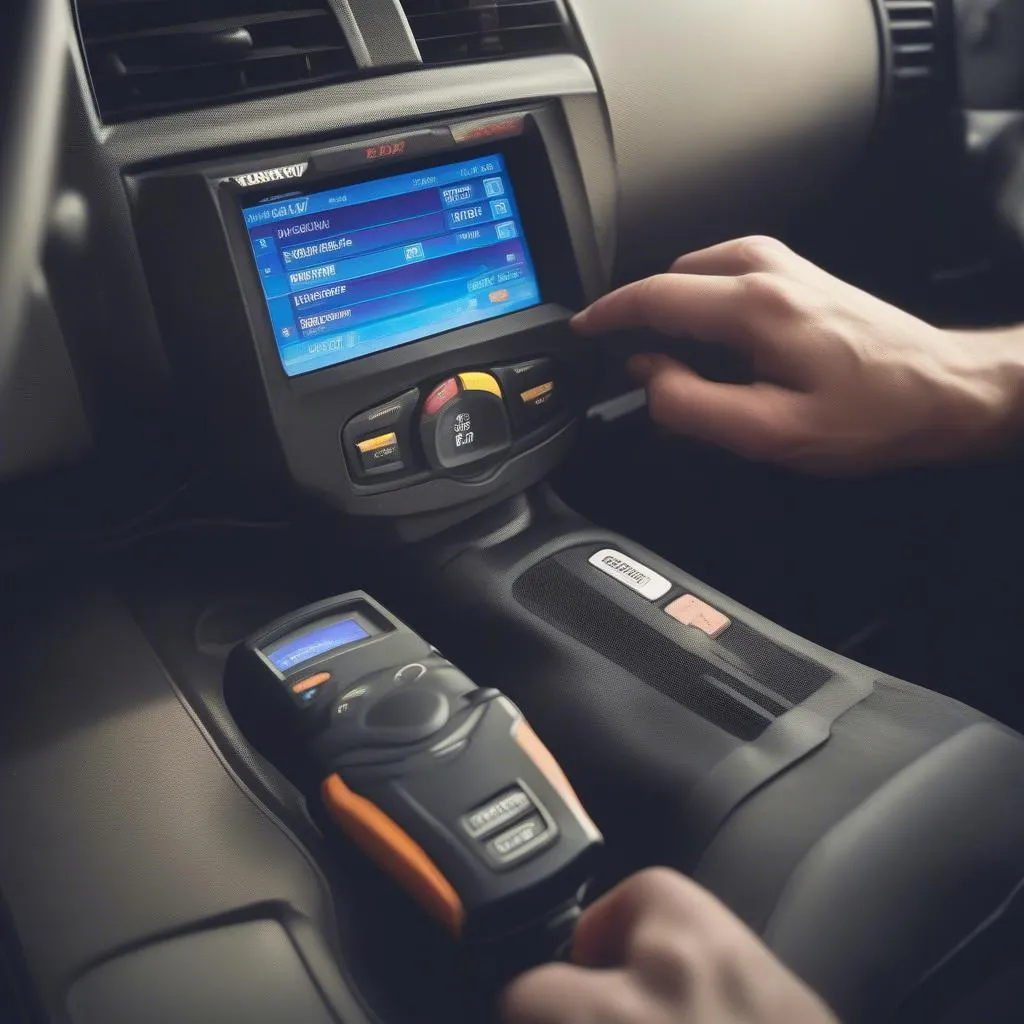Have you ever wondered how to get the most out of your 2004 Nissan 350Z on the track? Or perhaps you’re a mechanic who wants to understand the intricacies of the 350Z’s electrical system. A deep dive into the OBD II PIDs (Parameter IDs) can be your key to unlocking the full potential of this iconic sports car.
Understanding the Importance of OBD II PIDs
OBD II PIDs are like the language of your car. They are codes that represent different parameters and sensor readings within your vehicle’s engine and electrical system. Think of them as tiny messengers whispering information about your car’s health and performance.
From a mechanic’s perspective, OBD II PIDs are crucial for diagnosing problems, monitoring engine performance, and troubleshooting issues related to emissions, fuel economy, and more. For enthusiasts, OBD II PIDs can provide insights into vital data like engine RPM, speed, coolant temperature, and even throttle position – information that can help you fine-tune your car for the track.
Diving into the 2004 Nissan 350z Track Obd Ii Pids List
Now let’s get into the specifics. The 2004 Nissan 350Z utilizes a sophisticated OBD II system, offering a wealth of data through its PIDs. The exact list of PIDs varies slightly depending on the specific model and engine configuration. However, here are some of the most common and valuable PIDs you’ll want to know:
Engine Performance PIDs:
- Engine RPM (PID 010C): This PID gives you a real-time reading of your engine’s speed, crucial for tuning engine performance.
- Vehicle Speed (PID 010D): This PID tracks your car’s speed, providing valuable data for analyzing performance and braking performance.
- Throttle Position (PID 0111): This PID tells you how much the driver is pressing the accelerator pedal, providing insights into throttle response and fuel consumption.
Engine Health PIDs:
- Engine Coolant Temperature (PID 0105): Keeping an eye on coolant temperature is critical to preventing engine overheating. This PID helps you monitor your engine’s health and ensure it runs at optimal temperature.
- Air Intake Temperature (PID 010F): Understanding air intake temperature is crucial for tuning engine performance, especially in different weather conditions.
- Engine Load (PID 0104): This PID tells you how much the engine is working, providing valuable insights into fuel efficiency and engine load.
Fuel System PIDs:
- Fuel System Status (PID 0103): This PID provides information about the status of the fuel system, helping diagnose potential issues like fuel leaks or pressure problems.
- Fuel Rail Pressure (PID 010A): Keeping track of fuel rail pressure is vital for ensuring proper fuel delivery and engine performance.
- Fuel Trim (PID 0106, 0107): These PIDs provide information about how the engine is adjusting fuel delivery to maintain optimal combustion.
Finding the Right OBD II Scanner for Your 2004 Nissan 350Z
While a basic OBD II scanner can access some of these PIDs, a dedicated scanner like those offered by Dealer Scanner For European Cars provides a deeper level of functionality and data access. This is especially important when diagnosing advanced problems or tuning your 350Z for the track.
 Nissan 350Z OBD II Scanner
Nissan 350Z OBD II Scanner
Decoding the PIDs: What Does it All Mean?
Now that you know the key PIDs to look for, the next step is to understand what the data actually means. This is where a combination of experience, training, and dedicated resources like the Nissan 350Z Service Manual are essential.
For example, a high coolant temperature reading might indicate a malfunctioning thermostat or a coolant leak. Similarly, a low fuel trim value could signify an issue with the fuel injectors or air intake system.
Using OBD II PIDs for Performance Tuning
Beyond diagnostics, OBD II PIDs can be a powerful tool for optimizing your 350Z’s performance on the track. By analyzing data like throttle position, engine load, and air intake temperature, you can gain valuable insights into your car’s behavior and make informed decisions about adjusting the engine settings.
Many enthusiasts use OBD II PIDs to fine-tune their 350Z’s ignition timing, fuel mixture, and even boost levels (if applicable). While this can be a complex process, it offers immense rewards in terms of performance gains and a deeper understanding of your car’s mechanics.
Frequently Asked Questions:
- What are some common OBD II PID errors I should look out for on my 2004 Nissan 350Z?
- The most common OBD II error codes relate to emissions, fuel system issues, and sensor malfunctions. Always consult a trusted repair manual or a qualified mechanic for the most accurate diagnosis and repair.
- Can I access OBD II PIDs using my smartphone?
- Yes, many smartphone apps are available that connect to your car’s OBD II port and display various PIDs. However, these apps often have limited functionality compared to dedicated OBD II scanners.
- Is it safe to modify my 2004 Nissan 350Z’s engine settings using OBD II PIDs?
- While some modifications can be made safely, it’s essential to proceed with caution and consult with a qualified mechanic or tuning expert to avoid damaging your engine or affecting your car’s reliability.
Conclusion: Unlocking the Potential of Your 2004 Nissan 350Z
Understanding the 2004 Nissan 350Z track OBD II PIDs can be a game-changer for both enthusiasts and mechanics. From diagnosing potential issues to fine-tuning your car for peak performance, this information provides invaluable insights into the workings of your vehicle.
We encourage you to delve deeper into the world of OBD II diagnostics and explore the many resources available to enhance your understanding of your 2004 Nissan 350Z. And remember, if you have any questions or need help with your 350Z’s diagnostics, our team of expert technicians is always available to assist you. Contact us via Whatsapp: +84767531508
We hope this guide has been helpful. Let us know your thoughts in the comments below!